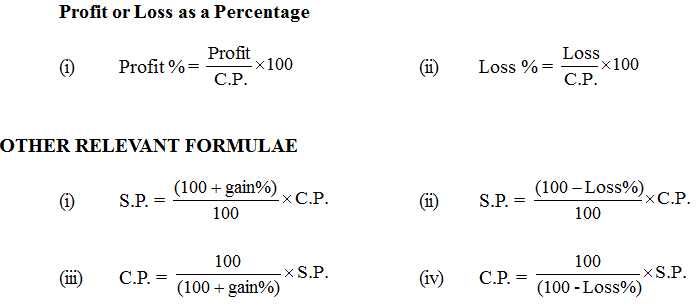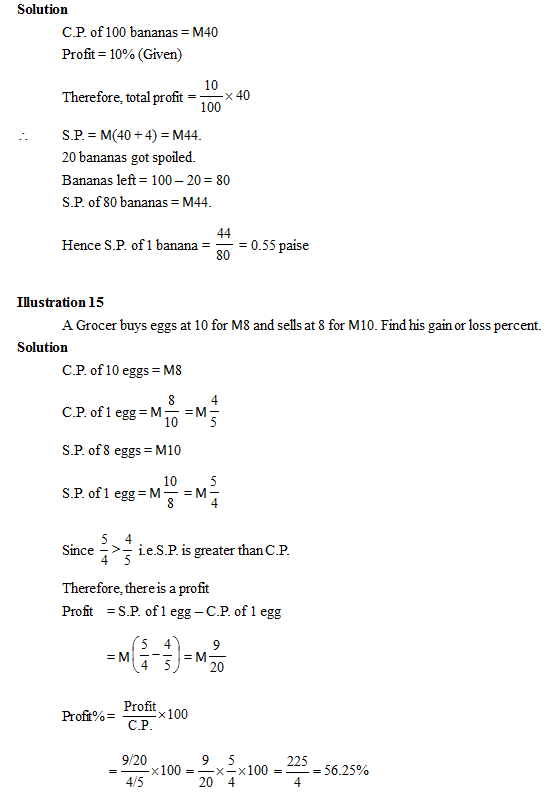- Books Name
- CBSE Class 7 Mathematics Book
- Publication
- Param Publication
- Course
- CBSE Class 7
- Subject
- Mathmatics
Profit, Loss & Discount
Cost price : The money paid by the shopkeeper to buy the goods from a manufactures or a wholesale is called the cost price of the shopkeeper & it is abbreviated as C.P.
Selling price : The price at which a shopkeeper sells the goods is called the selling price of the shopkeeper, it is abbreviated is S.P.
Shopkeeper makes gain or profit if S.P. > C.P.
Profit = S.P. – C. P.
S.P. = Profit + C.P.
C.P. = S.P. – Profit
Loss = C.P. – S.P.
S.P. = C.P. – Loss
C.P. = S.P. + Loss
Gain or loss is always calculated on C.P.

Overhead Charges : Shopkeeper has to bear some additional expenses such as sales tax, labour charges, maintenance charges for the goods before they are sold. Such charges are called overhead charges. Overhead charges becomes a put of cost price.
Illustration 12
An article was purchased for M400 and sold for M336. Find the loss & loss percent.
Solution
C.P. of article = M400
S.P. of article = M336
Since S.P. < C.P., so there is a loss
Loss = C.P. – S.P.
= M(400 – 336) = M64
![]()
Hence, loss = M64
Loss % = 16%.
Illustration 13
Selling price of a toy car is M540. If the profit made by shopkeeper is 20%, what is the cost price of this toy?
Solution
![]()
Illustration 14
A fruit seller bought bananas for M40 out of them, 20 bananas were spoiled and thrown away.
He sold the remaining bananas at a profit of 10%. Find the selling price of the bananas.


 Param Publication
Param Publication
